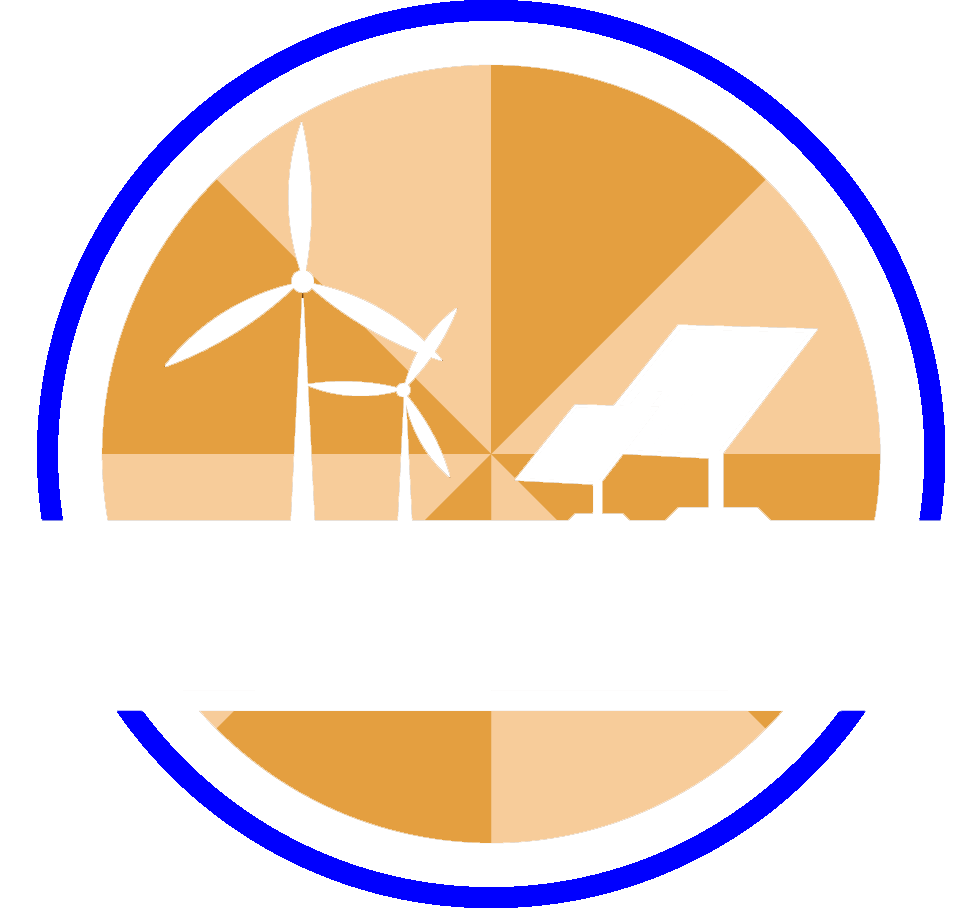Group Expertise
Vector Network Analyzer (VNA)
A vector network analyzer (VNA) is an instrument that measures the network parameters of electrical networks. VNA is widely used for radio frequency (RF) applications. With the help of VNA, we can investigate the electromagnetic interference shielding performance of the advanced materials produced in the DJIRE Lab.
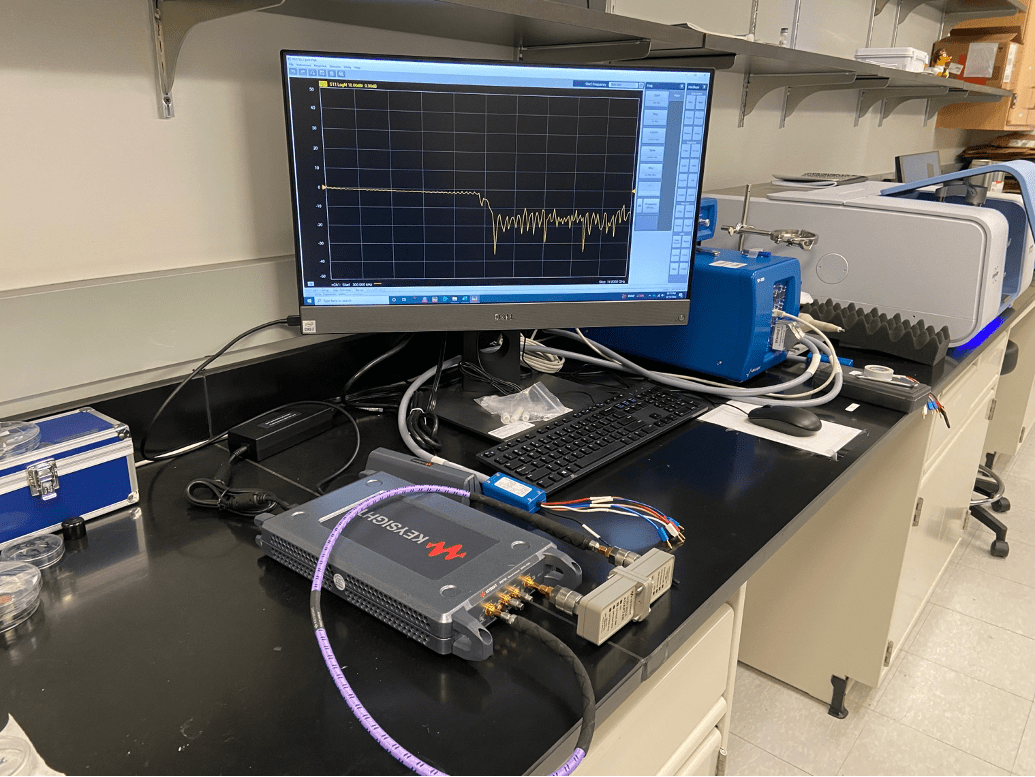
PAT-Cell
The PAT-cell is used for two- or three-electrode measurements. With its excellent corrosion resistance, it can work with aqueous and aprotic electrolytes over wide pH ranges. PAT-cell has superb gas insulating system which minimizes diffusion limitations, important for energy storage devices.

Quartz Tube Furnace
The ATS Series 3210 Split Tube Furnace with a fused quartz tube is designed to withstand temperatures up to 1200 °C, has three independent heating zones, and can be fully programmed. The furnace has flowing NH3, 15% CH4/H2, 1% O2/He, H2, and Ar gases for the synthetic etching of MXenes and the synthesis of transition metal carbides and nitrides.

MBraun 2 Person Glovebox
Our glovebox allows us to conduct experiments under inert and dry argon atmospheres including dealing with non-aqueous solvents. We are able to have two persons working at the same time within the glovebox as well.

Rigaku Miniflex XRD
Our Rigaku Miniflex XRD is capable of scanning 2θ angles ranging from 2°-145°, at rates up to 20°/minute. Additionally, up to 8 samples can be loaded and scanned at a time, thanks to the ASC8 sample tray currently installed. Unknown sample identification can be carried out using the ICDD database acquired.



In-situ/Operando FTIR Spectrometer
Our in-situ/operando Invenio-R spectrometer provides highly accurate results over a broad measurement range of 6000 cm-1 to 80 cm-1 . Additionally, specular, ATR or diffuse reflectance measurements can be easily made using the Seagull™ Variable Angle Reflection Accessory.

Chemisorption/Physisorption System
This Chemisorption/Physisorption System from Quantachrome Instruments is equipped with both mesopore and micropore analysis, which can enable us to analyze the physical and chemical properties of materials. The chemisorption is equipped with a furnace can reach up to 1100°C, and can be accommodated with different gaseous adsorbents for chemisorption analysis. The chemisorption is also designed with optional flow-based measurement capabilities (TPR, TPO, TPD).
In-Situ Raman Spectroelectrochemical System
A fully automated confocal InVia Qontor Raman instrument coupled with 3 lasers (532, 633, and 785 nm) with a spatial and depth resolutions of < 1 um and 2 um, respectively, and a motorized XY stage. Provides high speed, high resolution 3D image, and large spectral area.

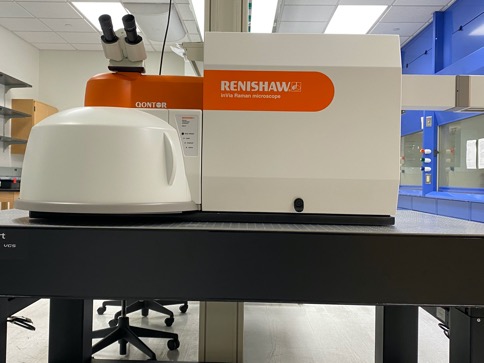
In-Situ UV-Vis NIR Spectroelectrochemical System
High performance UV-VIS-NIR Spectrophotometer equipped with four gratings, a resolution of 0.1 nm, and an excellent stray light rejection: less than 0.00008 % at 220nm, and a large sample compartment. Includes 3 detector system: PMT, InGaAs and Peltier controlled PbS detectors for a superior S/N ratio. The UV-3600Plus is engineered with maximum efficiency to assure high sign resolution and reproducibility.


Electrochemical Potentiostat System
A double channel potentiostat/galvanostat equipped with EIS. Provide reproducible electrochemical measurements in the +/– 12 V and +/– 500 mA range.
High-Temperature Tube Furnace 1700 ◦C
A Rapid Temp Model 1730-20 HT Horizontal Tube Furnace designed and manufactured with double wall construction. The inner shell is carbon steel and the outer shell is stainless steel, designed for maximum temperature efficiency and uniformity. The heated cavity accommodates a 3.125” I.D. tube and has a 20” L hot zone.
The power supply features a Eurotherm Model 3504 microprocessor based programmable controller with up to 25 programs and 500 segments. The unit is rated at 10 KW, 208 or 240 volt, 60 Hz, single-phase service.


The power supply features a Eurotherm Model 3504 microprocessor based programmable controller with up to 25 programs and 500 segments. The unit is rated at 10 KW, 208 or 240 volt, 60 Hz, single-phase service.
Synthesis hoods
Two-double fume hoods for materials synthesis including high-surface area carbides and nitrides with 4 different reactant gases NH3, CH4/H2, 1%O2/N2, and Ar.
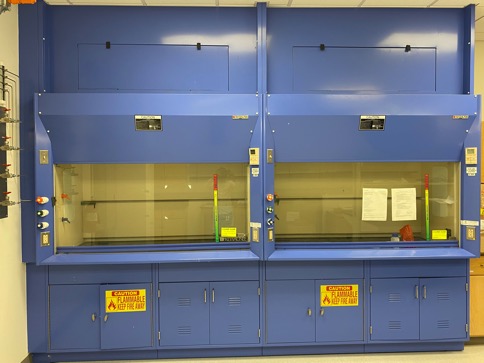
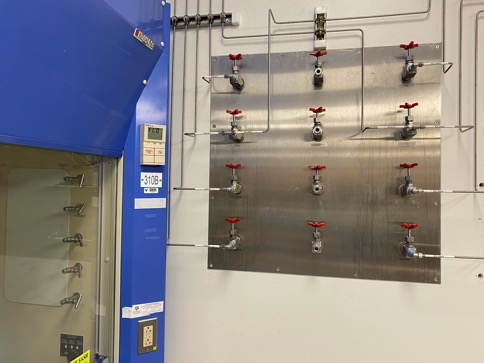
Vacuum Oven
A temperature-controlled vacuum oven designed for drying electrodes and electrocatalysts.


Ultrasonic Cleaner with Mechanical Timer
This high efficient ultrasonic cleaner plays a critical role for the cleaning tasks of many different glassware. More importantly, ultrasonic treatment will be significantly helpful for catalyst power dispersion in solution. Ultrasonic energy can be also applied to provide energy for certain reactions. We will have another upgraded one coming with precise temperature control.
Rotating Electrochemical System
This Pine Research MSR Rotator, with adjustable range from 50 to 10,000 RPM and accuracy within 1% of the reading display, enables a flexible design as an electrode rotator, which can be used with Rotating Disk Electrodes (RDE), Rotating Ring-Disk Electrodes (RRDE), and Rotating Cylinder Electrodes (RCE). Electrode rotators have been intensively used in electrocatalysis field, allowing us to study a redox reaction with controlled hydrodynamic steady-state conditions, giving access to valuable kinetic information.


In-situ/Operando Raman Stage
Screen printed electrodes with three electrodes set up, including 2 mm carbon working electrode, carbon counter electrode, and silver chloride reference electrode, provide significant convenience for us to apply in-situ, operando techniques. As shown in the picture, this set up can be easily put under the Raman laser for spectroscopic study, and the connection between potentiostat and this electrode stand can enable us to do electrochemical study at the same time.
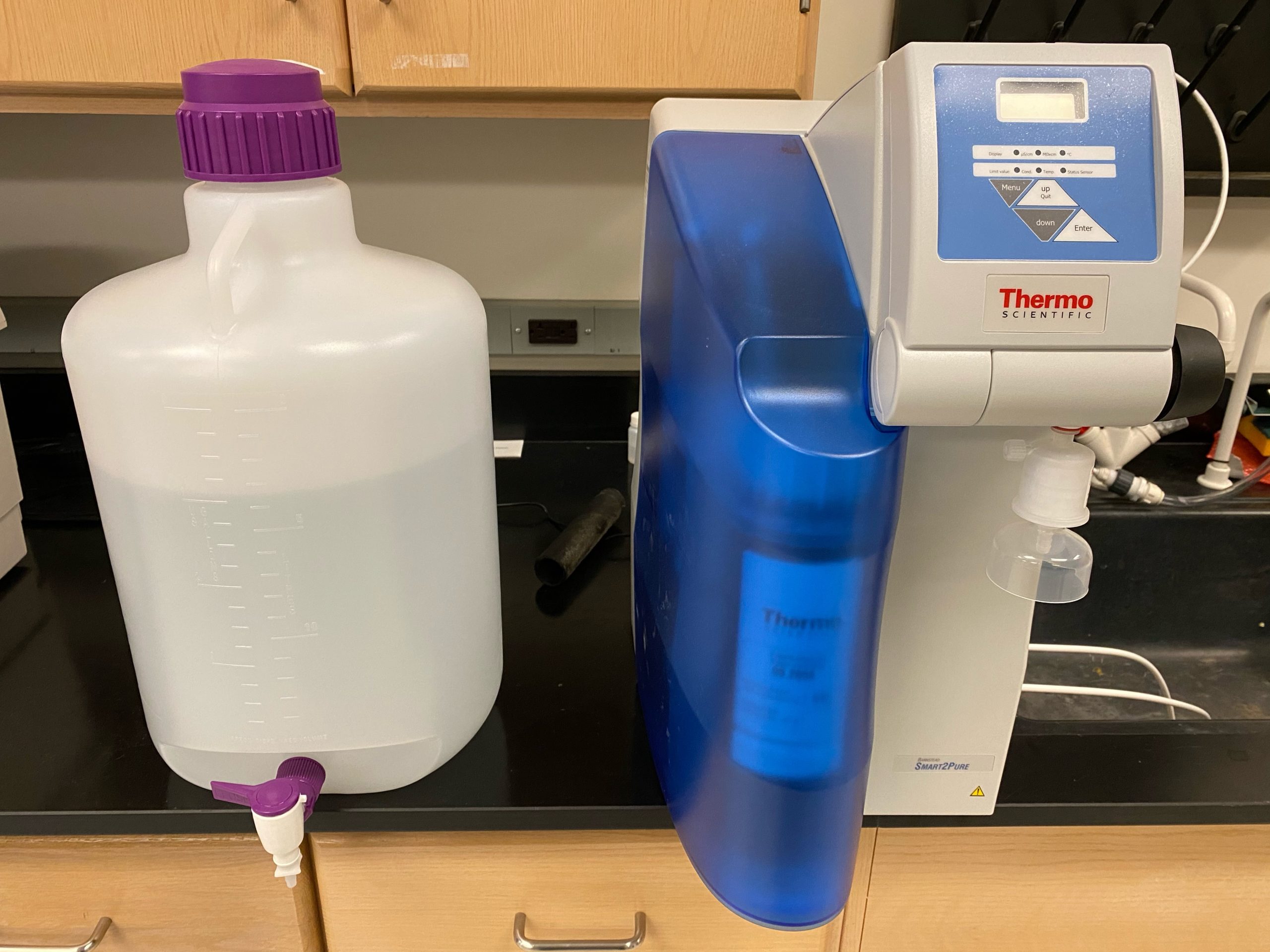
Ultra-pure Water System
This water purifying system can convert tap water to both ASTM Type 1 and Type 2 water, achieve a resistivity of 18.2 MΩ.cm (at 25°C).
Centrifuge
This centrifuge from Thermo Scientific is used to separate processes and can achieve up to 15000 rpm speed. This high speed capability enable us to separate monolayered 2D materials from their multilayered counterparts.
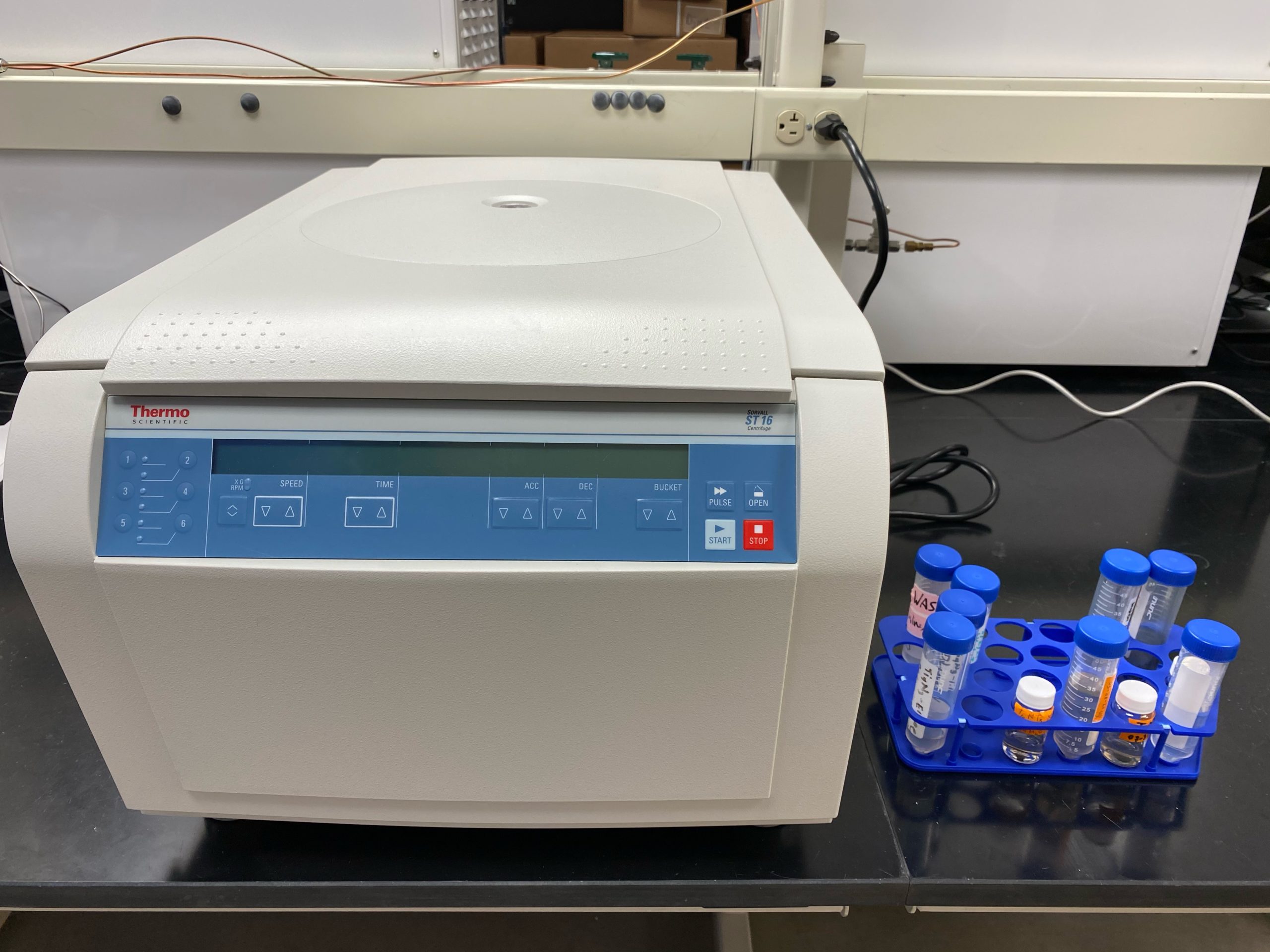
GC-MS System
Our single quadrupole gas chromatograph-mass spectrometer (GC-MS) GCMS-QP2020 NX can be used for qualitative and quantitative analysis of analytes. It features the Advance Scanning Speed Protocol technology that allows high scanning speed without sensitivity loss. The highly sensitive, high-accuracy analysis results can be validated using the NIST Mass Spectral Library Database for compound identification within the bundled software.

